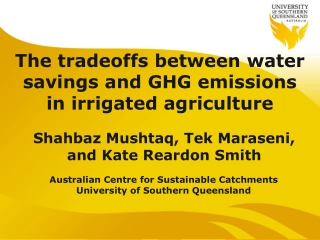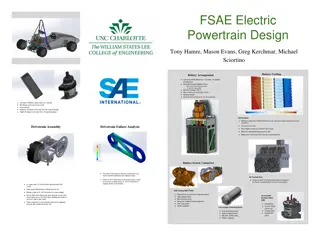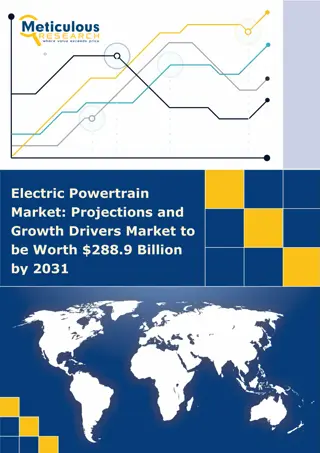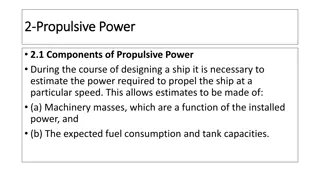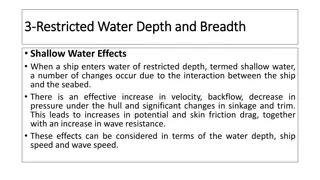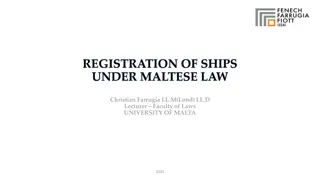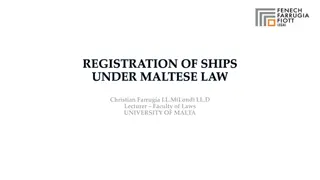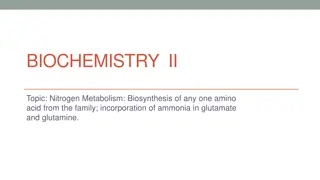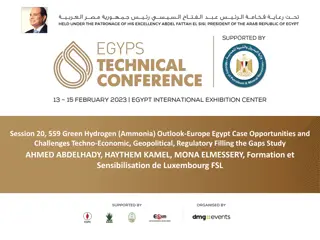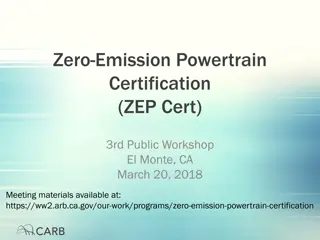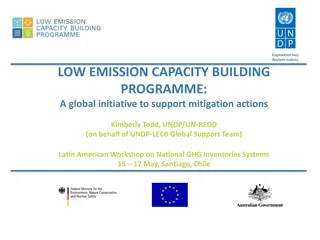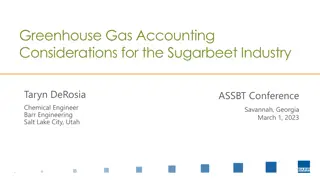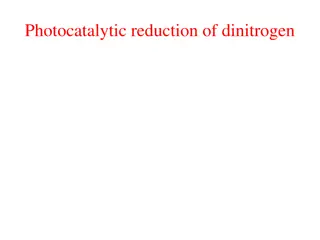
AEGIR Project Overview - Ammonia-Fueled Ship Powertrain for GHG Emission Reduction
The AEGIR project aims to establish a design concept for a fully electric ammonia-fueled ship powertrain with zero CO2 emissions, high efficiency, and significant reduction in greenhouse gas emissions. It focuses on integrating key technologies like SOFC, PEMFC, and PCEMR to achieve emissions reduction targets and validate system performance. The project also includes activities such as concept studies, scale-up analysis, and experimental validation to advance sustainable maritime solutions.
Download Presentation

Please find below an Image/Link to download the presentation.
The content on the website is provided AS IS for your information and personal use only. It may not be sold, licensed, or shared on other websites without obtaining consent from the author. If you encounter any issues during the download, it is possible that the publisher has removed the file from their server.
You are allowed to download the files provided on this website for personal or commercial use, subject to the condition that they are used lawfully. All files are the property of their respective owners.
The content on the website is provided AS IS for your information and personal use only. It may not be sold, licensed, or shared on other websites without obtaining consent from the author.
E N D
Presentation Transcript
AEGIR Project overview AEGIR - Prep kick-off 1 4 March 2021 DTU Energy
AEGIR Overall project Ammonia electric marine power for GHG emission reduction Electricity output Electricity output Emission Emission Ammonia Ammonia input input H H2 2O O SOFC SOFC PEMFC PEMFC NH NH3 3 PCEMR PCEMR AEGIR - Prep kick-off 2 4 March 2021 DTU Energy
AEGIR - Partners Partner Country DTU-Technical University of Denmark DK Ballard Power Systems Europe A/S DK SINTEF N CoorsTEK N Vard N VTT F AEGIR - Prep kick-off 4 March 2021 DTU Energy 3
AEGIR - Objectives Establish a design concept for a fully electric ammonia-fueled ship powertrain without CO2-emissions and having a tank-to-electricity efficiency >60% Demonstrate a reduction of GHG emissions >90% compared to current SoA LNG fueled marine engines in a well-to-tank (including emissions from electricity production and ammonia synthesis and logistics) and tank-to-propeller (including the use of the fuel onboard) analysis Experimentally validate the three key enabling technologies for the integrated concept aiming at: a degradation rate below 0.3%/1000 h to enable 40000 h lifetime of the SOFC system at >95% ammonia conversion, a hydrogen output from the PCEMR fulfilling the ISO 14687 specifications in terms of NH3, N2and O2 concentration, and a degradation rate below 0.3%/1000 h to enable 40000 h lifetime of the PEMFC system using the hydrogen purity specifications from the PCEMR. Identify potential scale up issues for 20 MW maritime system in a concept study. AEGIR - Prep kick-off 4 March 2021 DTU Energy 4
AEGIR - Activities Design concept of the main system for using NH3in marine applications building on integrating the three technologies SOFC, PCEMR, and PEMFC GHG emission reduction analysis Experimental validation of the three key technologies under the conditions defined in the system layout Concept study on scale up issues for large marine vessels requiring electrical power in the range of ca. 20 MW AEGIR - Prep kick-off 4 March 2021 DTU Energy 5
Aegir WP structure WP1 Project Management, Impact and Dissemination (DTU) WP2 NH3Cracker & 1stPower Stage(VTT) WP3 Fuel Quality and Cleaning (SINTEF) WP4 2ndPower Stage (BALLARD) WP5 Concept Studies and System Analysis (DTU) Advisory Board AEGIR - Prep kick-off 4 March 2021 DTU Energy 6

